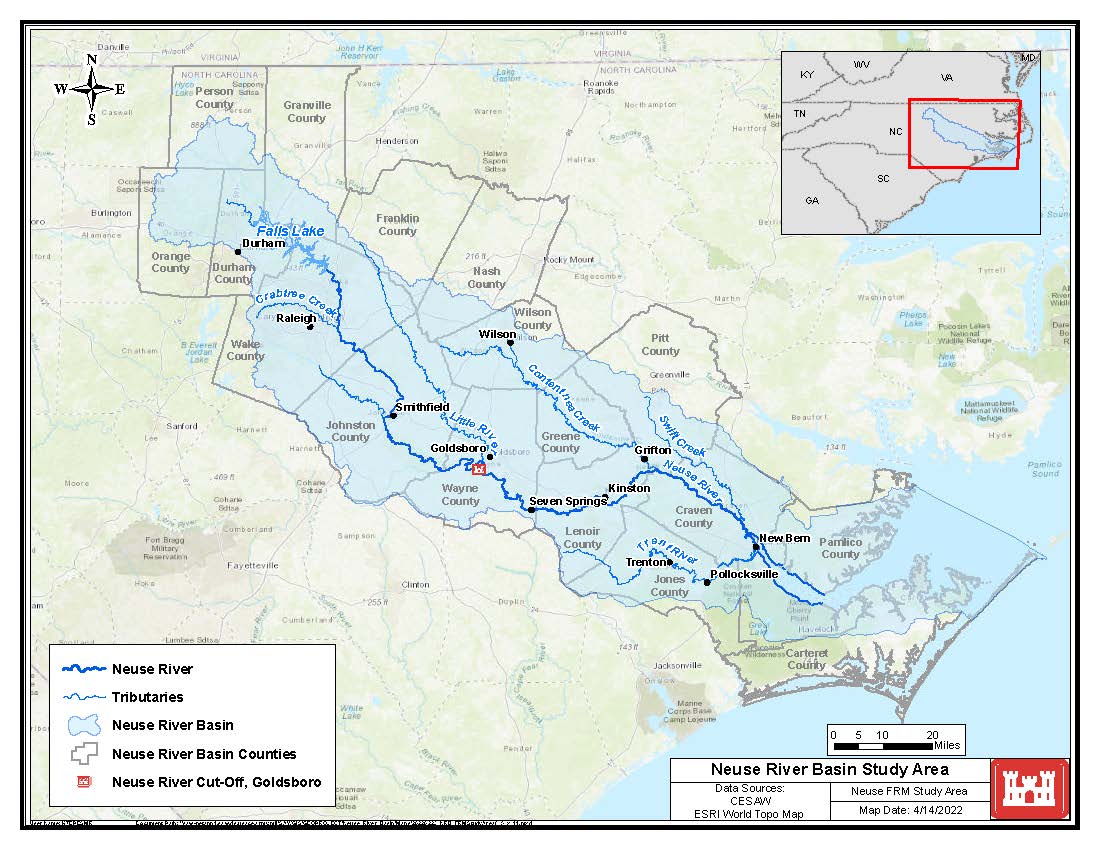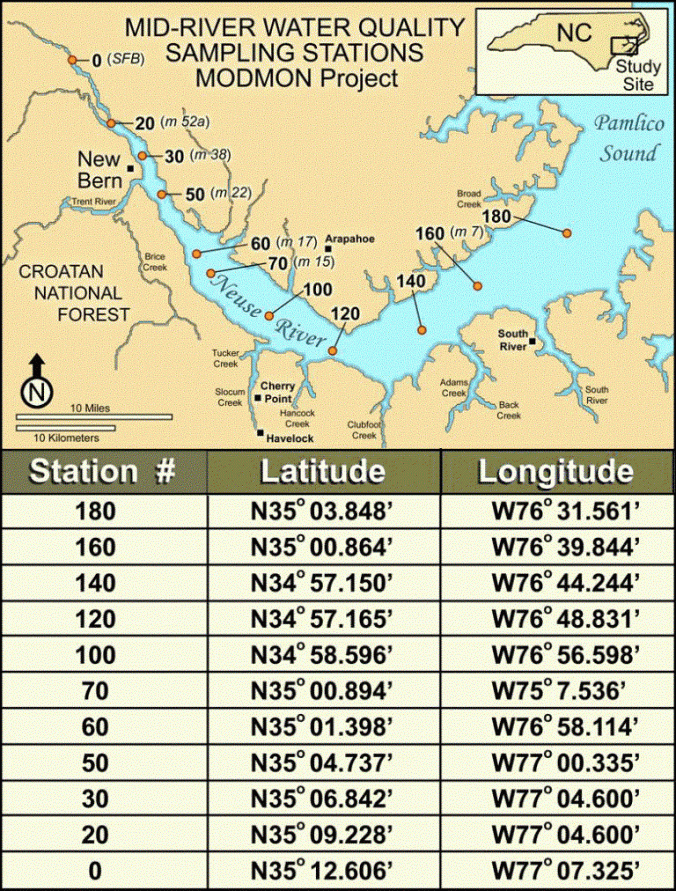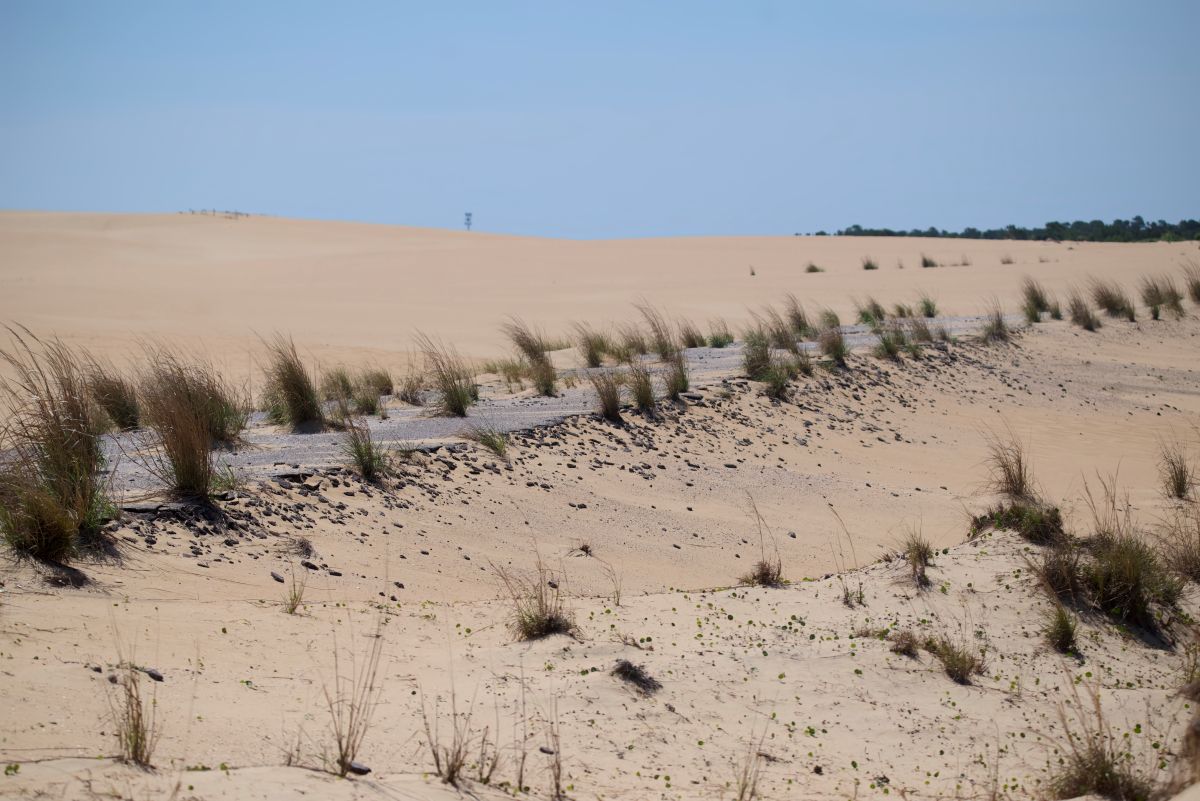
Recent samples of the Neuse River between New Bern and where it empties into the Pamlico Sound show that the estuary continues to be saltier than normal, particularly for late winter.
Nathan Hall, research assistant professor at the University of North Carolina Chapel Hill Institute of Marine Sciences in Morehead City, told Coastal Review that the 40-mile-long tidal estuary has had higher salinity since last year due to below average river flow.
Supporter Spotlight
The condition of the estuary is routinely checked through the Neuse River Estuary Modeling and Monitoring (ModMon) Project, a collaborative effort between the university and the North Carolina Department of Environmental Quality.
After samples are collected from the 11 stations, Hall summarizes the data and emails the information to members of the ModMon Neuse River Estuary Conditions group.
“February was generally dry and river flows were running at 50-100% below the seasonal average,” he shared with the group by email, adding water temperatures ranged from 51.8 F downstream to about 57.2 F in the upstream surface waters.
Hall explained to Coastal Review that seawater salinity off the coast of North Carolina is in the 35-36 range. With that in mind, the average surface salinity is around 15 at the most downstream station in the Neuse River estuary, or station 180 right where the river meets the sound, but right now it’s around 18.
The salt wedge was above New Bern, and at Station 30 right by New Bern, the bottom water salinity was about 10.
Supporter Spotlight
“In fall 2023, it got into the mid-20s, which is really rare. Overall the low-flow conditions are generally good for water quality in the estuary because nutrient loading accompanies inputs of freshwater. So we tend to see fewer and smaller algal blooms during low-flow/higher-salinity conditions,” he said.








